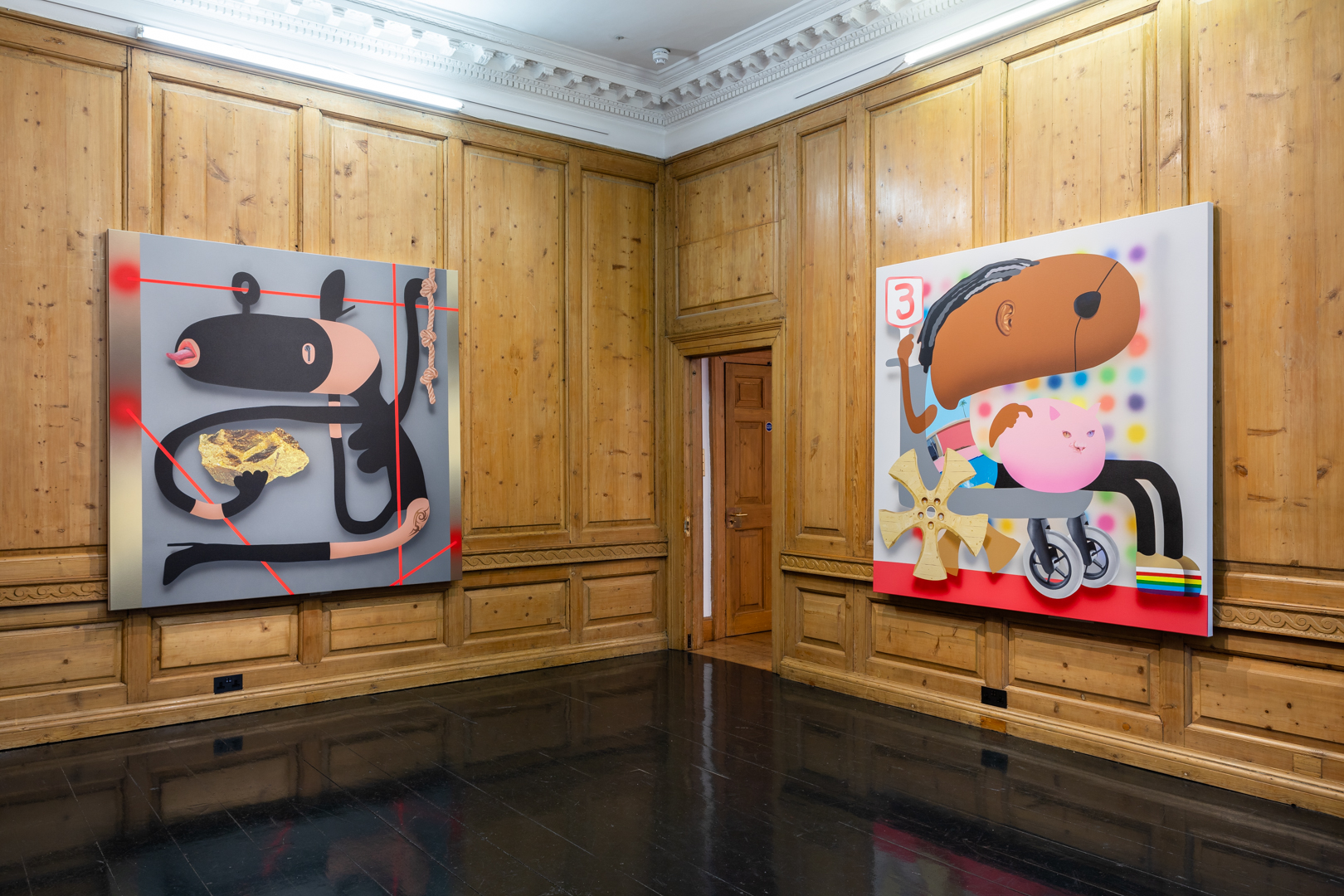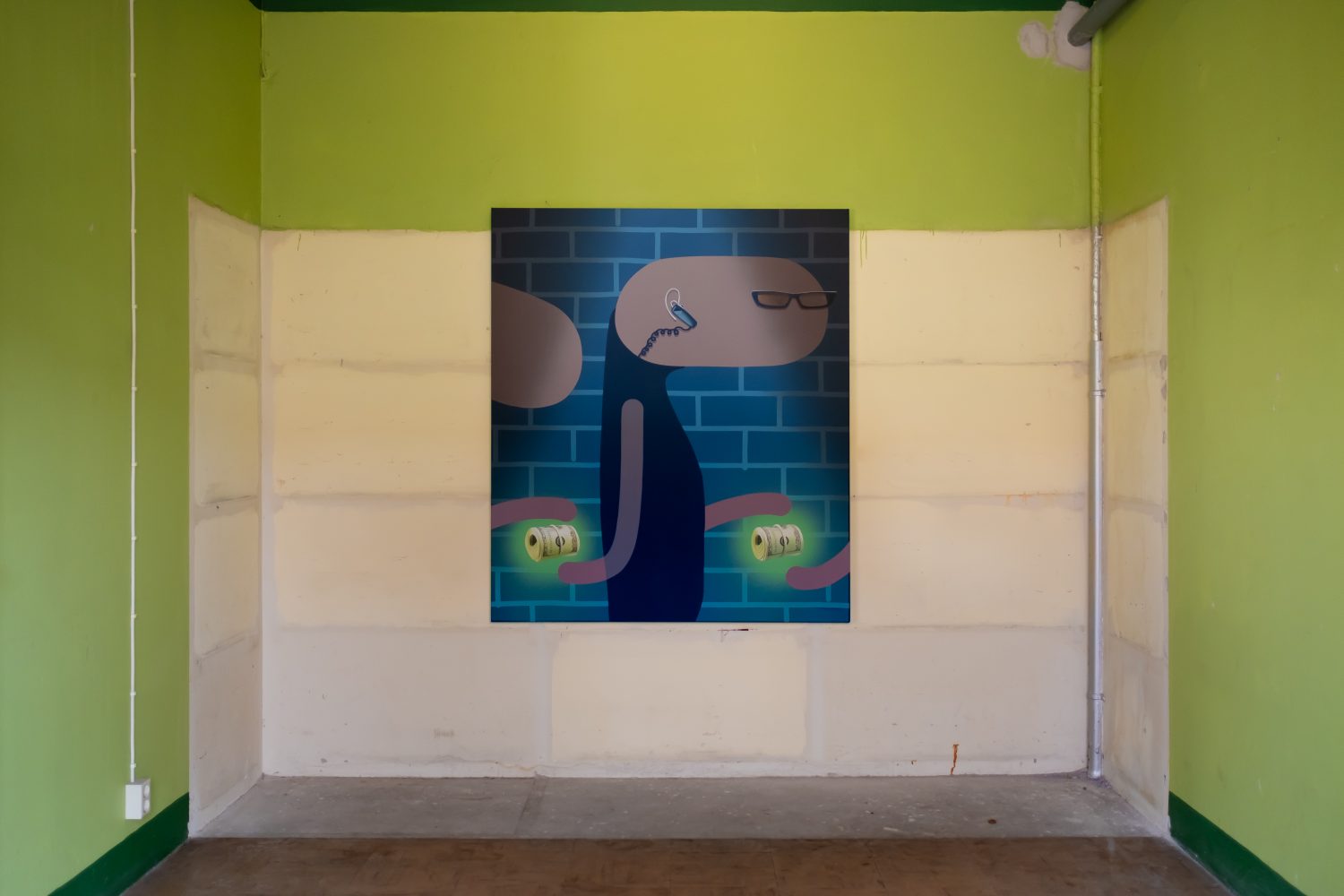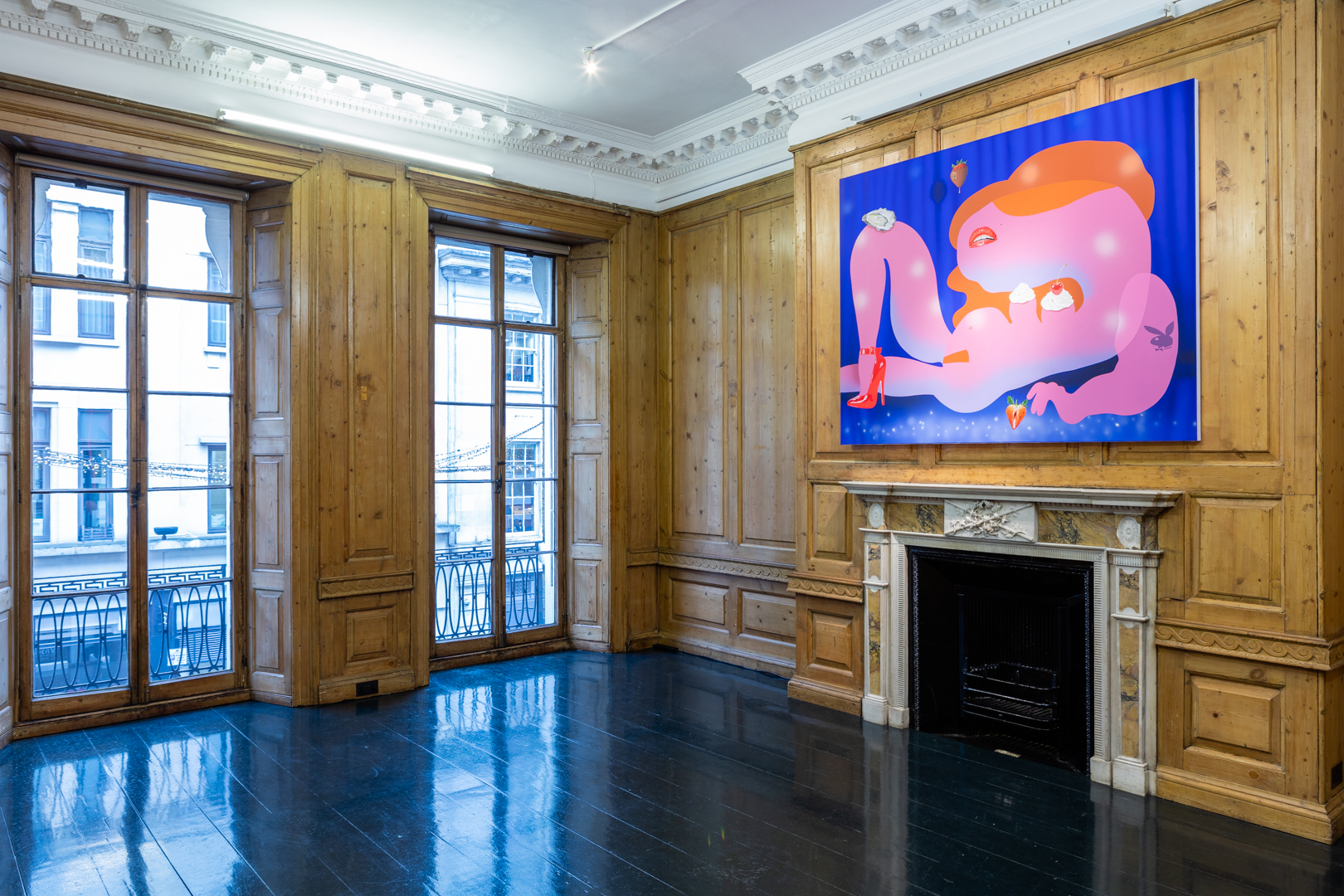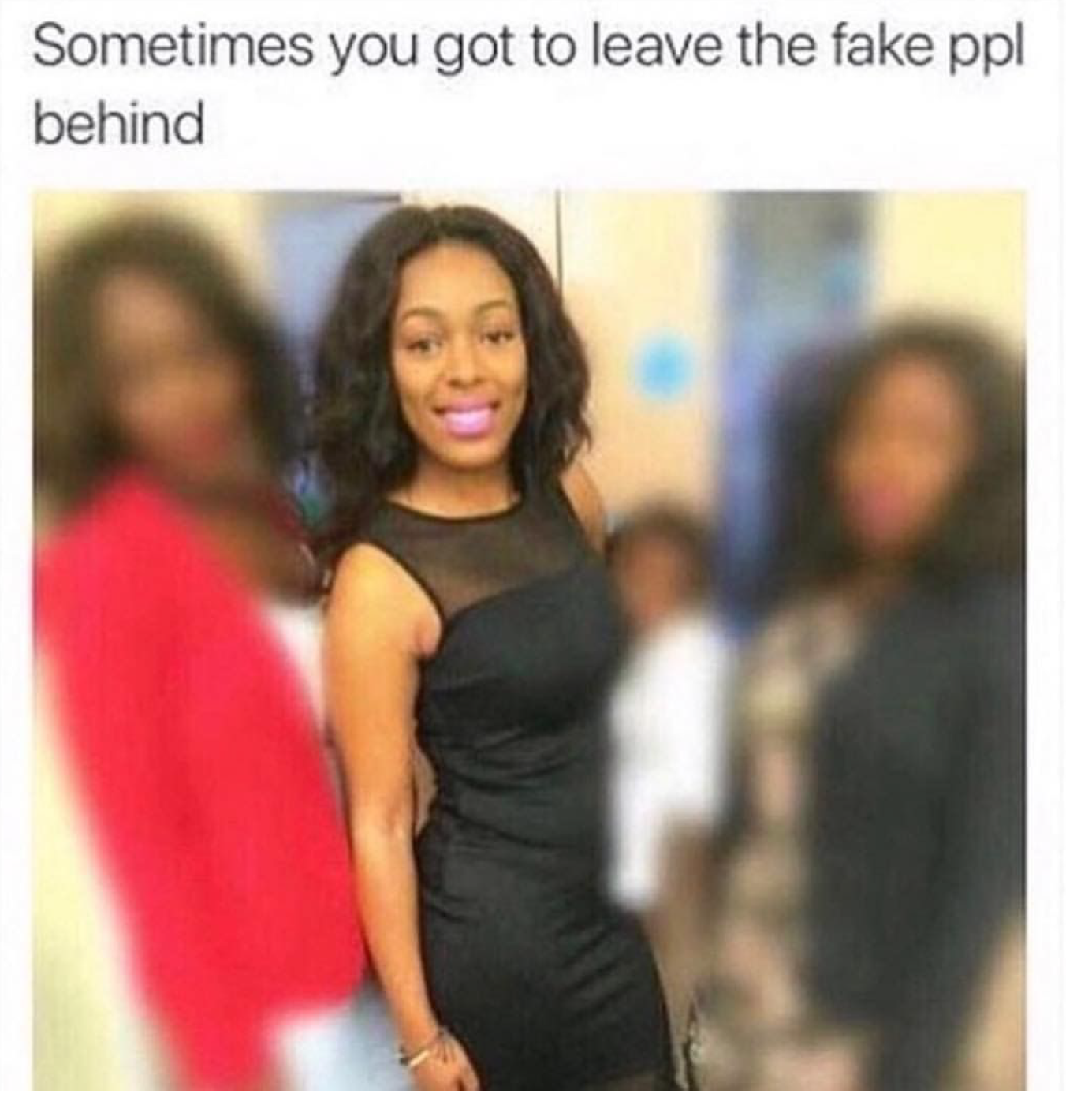Oli Epp’s paintings circulate a number of themes to do with the tragicomic element of living in the 21st century society, dealing with the complexity of identity and anxieties living in the digital age; consumerism and consumption which leads to control and addiction, anxiety and conflict. Last week, I reached Oli Epp to talk about his backstory, his art, and his thoughts on the Urban Art culture. Take a break and enjoy this conversation with one of the up-and-coming artists of today.

Fool’s Gold, 2019, acrylic and oil on canvas, 190 x 190cm, and Paddle, 2019, acrylic and oil on canvas, 180 x 180cm; Oxymoron at Carl Kostyál, London, December 2019 – March 2020
Rom Levy: Before we start, how’s Quarantine going?
Oli Epp: I took the plunge and packed up my London studio, which closed this week. I moved my materials out of London to work at my family home with my mum, step dad and 3 step sisters. It’s been a lot of fun so far as we’ve had some family time.
I’ve also been making drawings for some new paintings. This has also been a very productive time as I have a lot of planning to do for a major show that I am hosting at the Schlossmuseum in Austria later this year.
I’m interested in your backstory, how Oli Epp came to be?
Well literally speaking my parents are both from Canada but I was born in London. I studied at City & Guilds of London Art School. Since then I have been lucky to paint full time. I think some of the reasons for this have been thanks to my timing in capturing a moment between digital culture and painting that coincided with social media. This helped me to get discovered by some big galleries and I have gone on to show around the world.
On top of that I am very proactive about managing my network and being active; for instance I ran a residency, called PLOP, for emerging artists, which I hosted in my studio building. I get a kick out of connecting people when I can.
How did you first start making art? Was art part of your childhood?
Growing up I was always making things. My mum held on to a school book in which I described what I want to be when I grow up. I was dyslexic but other than the spelling it turned out to be pretty accurate. I said I wanted to be a cartoonist and that I like drawing animals. I also thought I might be a wrestler though. Let’s see.

Cash In Hand, 2019, acrylic and oil on canvas, 155 x 135cm; Malmö Sessions at Carl Kostyál, Sweden, May 2019 – June 2019
How did you land on your signature flat style?
Painter Juan Bolivar came and gave an artist talk where he showed us how to use different liquitex paints, mediums and techniques. I’d never seen precision tape work like that, so he was a big influence. Funnily enough, since then, we’ve actually become friends (I made him a pinata).
What would you consider your breakthrough moment?
I was very active about sharing my work and promoting my degree show. Some big galleries knew of my work before I even graduated and off the back of that I was immediately offered shows across Europe and the States. Since then I suppose my first solo show and the press I received in the LA Times felt like significant moments, for instance. I don’t know if any of this amounts to a breakthrough but they were big moments for me.
Is there an artist who particularly influenced you?
Gnoli Domenico. It’s my dream to own a work by him before I die.
Have you ever painted graffiti or murals?
Never. I’ve been offered to do murals and was even contacted by facebook and big festivals but it’s not something that interests me. I’ve always wanted to work within a fine art dialogue so I’ve often turned down offers to showcase my work on the street or even to do brand collaborations.
Have you been influenced by the Urban Art culture ? Yet different, I see a common thread in between artists such as yourself or Austin Lee and Urban Art.
I have never done street art or graffiti. I think that the connection has been made because I used to use spray paint in my work and flat bold colours. My inspiration to do that was drawn more from the history of pop art and advertising, such as with the Chicago imagists, for instance.

Aphrodisiac, 2019, acrylic and oil on canvas, 160 x 200cm; Oxymoron at Carl Kostyál, London, December 2019 – March 2020
Can you tell me more about your latest solo exhibition in London?
My latest show was at Carl Kostyál in Mayfair, London. It was called Oxymoron. I made 6 large paintings, each of which depicted a central character. The idea i was working with focused on supervillains. I have always tried to play around with contradictions in my work and the word oxymoron came to mind. I feel like the supervillain is this absurd character who embodies a lot of complex and conflicted notions yet are often depicted as two dimensional so there was a lot to work with in relation to my painting style.
What advice would you give to artists trying to make it out there ?
My main advice is to trust your ideas and to document all your work professionally. It will put you in a strong position when opportunities come around.
What was the latest post that made you laugh online?
This one got me in a giggle.

What type of art do you enjoy and what type of art you collect in your house?
I try to put 20% of what I make back into art. I buy a lot of 3D work. My latest acquisition was a 3m sculpture by Jesse Pollock and I’m currently saving up in hope to acquire an Al Freeman soft sculpture. I also bought a large work on paper by Peter Schuyff. Some work I get to literally enjoy, such as Amanda Mostrom’s bronze swing, which is installed in my apartment.
Source: StreetArt - streetartnews.net



